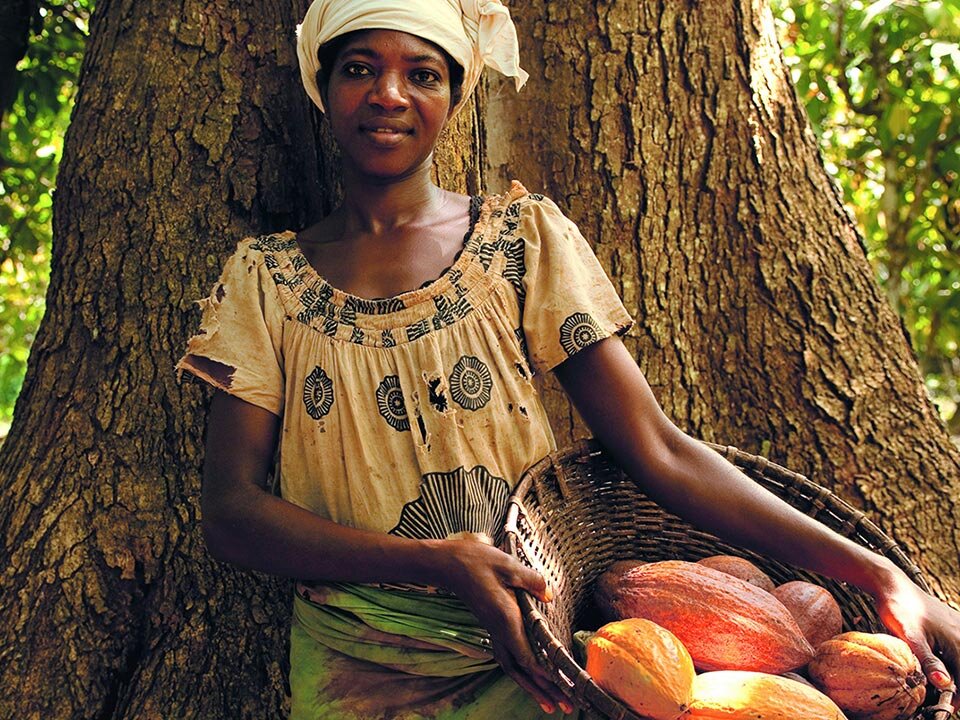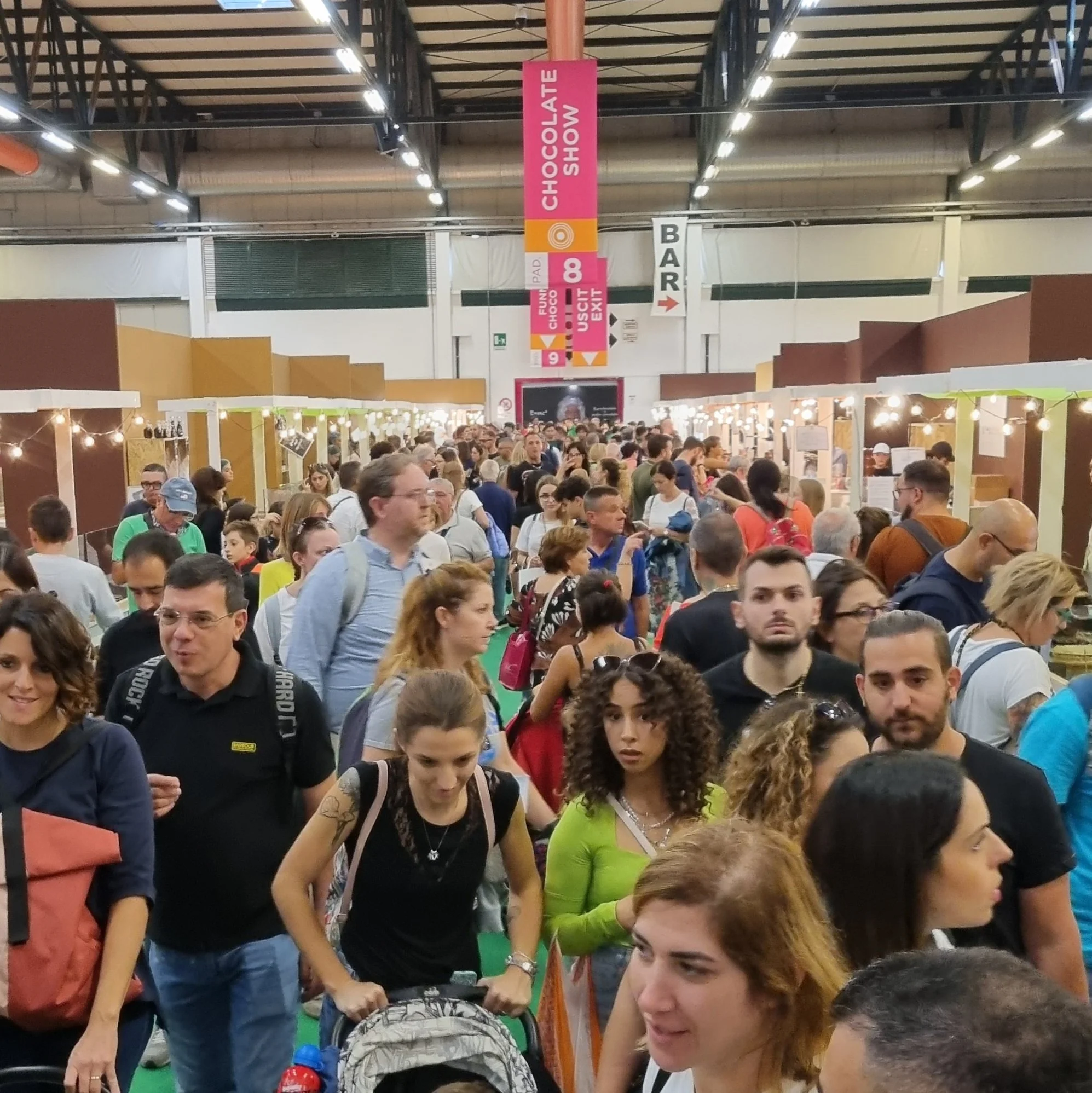Greenwashing in The Chocolate Industry: How To Avoid Being Fooled
Are you being tricked by the most devious greenwashing tactics in the chocolate industry?
“Environmentalist Jay Westerveld coined the term greenwashing in the 1980s, contemptuously criticizing the hospitality industry’s push for clients to reuse their towels under the pretense of saving the environment. In truth, hotels were fundamentally motivated to cut costs through less laundering.” - reports The Guardian.
Greenwashing means spending more time and money claiming to be “green” through advertising and marketing rather than actually implementing business practices that minimize environmental impact. And there is one single reason why companies would want to do that: PROFIT. Nothing more and nothing less than convincing consumers to pay a premium price for environmentally-sustainable and ethical products, all while enjoying an improved reputation.
From Volkswagen cheating on emission tests to H&M campaigning for sustainability while being a fast-fashion brand, greenwashing has been around for decades already, but it’s only now, that consumers deeply care for good business practices, that companies are doubling their efforts to look greener than ever, including the most well-known chocolate brands.
Sustainability is now the biggest buzzword in the chocolate industry. There is at least one presentation about this topic in every chocolate conference, event and festival around the world. Big chocolate brands now showcase long pages on their websites dedicated to their sustainability efforts. On the packaging of chocolate bars there is always some environmental reference between natural images, certifications, and proud claims. But how much of it is passionate effort to change the world, and how much of it is just marketing strategized in a conference room?
Here are 4 tactics that chocolate companies, especially big corporations, are using to greenwash you into buying their mediocre and disruptive products. Once you are aware of them, you won’t be fooled ever again, and will be able to make smarter choices.
FEEL-GOOD IMAGERY OF COCOA FARMERS, PODS AND TREES
Have you noticed? Smiley faces of happy cocoa farmers, colorful cocoa pods and rich cocoa trees can now be found on many chocolate products, especially bars, at the supermarket. It wasn’t like that before. Was chocolate not made from cocoa trees back then? Were cocoa farmers all grumpy and sad? No, it’s just that sustainability wasn’t a priority for consumers as much as it is in 2021.
Back in the 2000s, chocolate companies only cared for their products to look delicious and luxurious. Nobody would cancel them on social media for unethical and environmentally-destroying business practices. But now that consumers demand transparency, traceability and sustainability, that’s what chocolate companies are giving us. Or at least, the feeling of it. Images of cocoa trees and pods evoke in us feelings of naturality, purity, a product coming directly from Mother Nature. At the same time, images of smiley cocoa farmers make us feel like we are doing something good for other people. These images are a lie, or at best irrelevant.
Cacao beans come from a pod on a tree regardless of sustainable or unsustainable farming practices, regardless of the fine or bulk flavor of that cacao variety, and regardless of the premium or miserable price paid to the farmers. So the colorful image of a cocoa tree or a cocoa pod slapped on a packaging says ZERO about the sustainability efforts of a company. I also dare you to have a big smile on your face while being bitten by mosquitoes all day, in an unbearable humidity, doing an extremely physical work, while being paid an average of $1 a day. Truth is that the majority of chocolate corporations buys already-made chocolate from other giant manufacturers, so they don’t even know where that cacao comes from, let alone associating the face of a farmer to it.
What to look for instead: clear references to the cocoa producer or farm for that specific chocolate. Truly sustainable and ethical chocolate makers will be proud to let you know the origin of the cacao used, giving you NAMES, showing you the farms, pinpointing geographical locations, sometimes even telling you the price paid to the farmers. This is real transparency, not general brochure imagery.
VAGUE AND UNSUBSTANTIATED CLAIMS
Quiz time: do you know what the claim All Natural actually mean?
The FDA has considered the term 'natural' to mean that nothing artificial or synthetic (including all color additives regardless of source) has been included in, or has been added to, a food that would not normally be expected to be in that food. However, this policy was not intended to address food production methods, such as the use of pesticides, nor did it explicitly address food processing or manufacturing methods, such as thermal technologies, pasteurization, or irradiation.
Meat with antibiotics can be all natural, just as any bag of greasy potato chips, or your favorite flavored Oreos, or any other heavily processed food. Also, the FDA makes no mention of nutritional values or health benefits associated with a “natural” product. It doesn’t get any better in the EU, where no legal definition has been developed yet despite the strong pressure from consumers. So rejoice yourself: you don’t know the meaning of “all natural” because it doesn’t mean pretty much anything.
Want to learn another claim used in the chocolate industry that doesn’t mean anything?
One of the most deceitful claims is Only the best ingredients. Says who? Compared to what? Following what criteria? Based on what qualities? The word “Best” reassures us that we are making the right choice in buying not only a quality product, but a top of the line, better than all the rest! It’s funny how this claim is largely used by chocolate companies that sell their products for the most ridiculously low prices, deceiving us into believing that we can find excellence for the cost of a pack of gums. Quality has to be backed up by evidence, otherwise it is just a pat on your own back.
Other empty claims are: Sustainable Ingredients (where is the proof and what is your definition of “sustainable”?), Ethical (then why won’t you tell us how much you pay for your cacao?), Eco-friendly Packaging (but is it compostable, biodegradable or recyclable?).
What to look for instead: evidence for every enthusiastic statement. Companies have a strong interest in showing their best sides and making grand claims, but always ask yourself: where is the proof? Chocolate brands that are truly ethical and sustainable will proudly shower you with info and details if you ask them, and will humbly admit where they can improve, without trying to fool you in the meantime.
IRRELEVANT EVIDENCE
Have you ever encountered a dark chocolate bar that proudly stated on its packaging Only 3 Ingredients? That’s called irrelevant evidence. Dark chocolate was never meant to have more than 3 ingredients in it (cacao, sugar and the optional cacao butter or lecithin). So this claim makes something that is the norm seem special, and this is a tactic that big chocolate companies particularly like. Let’s take another example:
We use cacao from small, family-owned cacao farms
“Small” and “family-owned” give us fuzzy feelings of a product that is made with care, on a small scale, involving many family members passionately working together. Although this sounds nice, get ready to be disappointed: small, family-owned cocoa farms are the absolute norm in the industry. About 95% of the world's cocoa beans are harvested on small, family-run farms with an average size of 2-5 hectares. The cocoa beans from each tiny farm are collected by cooperatives or middle companies to make a quantity large enough that it makes sense (time and cost wise) to ship them in bulk and sell them to chocolate professionals. Therefore, there is nothing exciting about cacao coming from a small, family-owned farm. It’s the norm, and doesn’t say anything about the quality, the environmentally friendliness and the sustainability of the cacao used by the company.
Irrelevant evidence includes all those claims that are true, but unimportant to the environmental/social performance of a product. For example, any “Free from..” claim when that ingredient mentioned was never supposed to be present. A vegan dark chocolate? Well, unless we are talking about possible cross-contamination in the factory, all dark chocolate is vegan by default, since it shouldn’t contain any dairy to begin with. Gluten-free follows the same line: dark, milk and white chocolate (without inclusions) doesn’t have gluten, so this claim is irrelevant and should not become a badge of honor.
What to look for instead: claims that have substance to them and don’t state the obvious. Educate yourself on the basics of chocolate so you can keep companies accountable without getting excited about the bare minimum. This way you will avoid falling pray of the laziest kind of marketing.
LOW PRICES WHILE CLAIMING SUSTAINABILITY
There is no way around it: cheap chocolate is inherently not sustainable, not environmentally friendly and not socially caring.
Big chocolate brands putting all sorts of certification stickers, colorful images and feel-good claims on their products are fooling you. You can’t have sustainable chocolate at a low price, and here is why: to make millions selling chocolate, cacao has to be extremely inexpensive.
Whenever companies pay a very low price for their raw material, it means that those who grow it are kept in poverty. This is why cocoa farmers are known to be making an average of $1 a day, despite the chocolate industry being worth $130 billion. It’s like fast-fashion for chocolate. But this is not all. Can you imagine a cocoa farmer that already has to maintain a family on $1 a day caring for the environment too?
If your family was starving, you would gladly use all sorts of pesticides, burn lands, and put into place unsustainable farming practices to raise cash fast to put food on the table. But if you were steadily paid a fair, livable and satisfying price for your efforts, then you would try to use all the best farming practices that can preserve the productivity of the land while caring about your surroundings.
It is mathematically impossible to have cheap chocolate that is sustainable for the environment and the people who grow it. If farmers aren’t paid well, the last thing they will care about will be the environment (righteously so).
What to look for instead: chocolate with a higher price tag than the average. Not all expensive chocolate is worth the price, but sustainable chocolate will never come cheap either. If your standard for a chocolate bar is $2-3, you are free to buy it, but don’t think for one second that it will do any good for the environment, despite all the pretty claims on it.
Greenwashing will always be around the corner, now more than ever. So make sure to look for the evidence behind every claim, don’t get excited for bare-minimum efforts, be aware of the deceptiveness of certain images, and remember that sustainable chocolate and cheap price tags can’t possibly be found on the same shelf.












